The ox is one of the 12 horoscope animals in the Chinese zodiac, Sheng Xiao. According to an ancient legend, when the Jade Emperor – one of the mythological Gods of the Celestial Empire – held a great race across a river between animals, the ox was almost the first to reach the emperor, but was fooled by a cat and a rat, which rode on its back over the river and then left him behind.
Ultimately, the rat pushed the cat down into the river and reached the emperor first and left the cat out of the zodiac. It seems like cats have held a grudge against rats ever since.
And now, after the year of the rat, 2021 – the year of ox – has finally arrived, bringing new hope and great expectations.
But what significance does the ox have in cultures around the world? Check out Sputnik's gallery to learn more.

Above: A bull jumps into the sea during the “Bous a la mar” or "Bulls to the sea" festival in the port of the eastern town of Denia, Spain, Sunday, 8 July 2012.
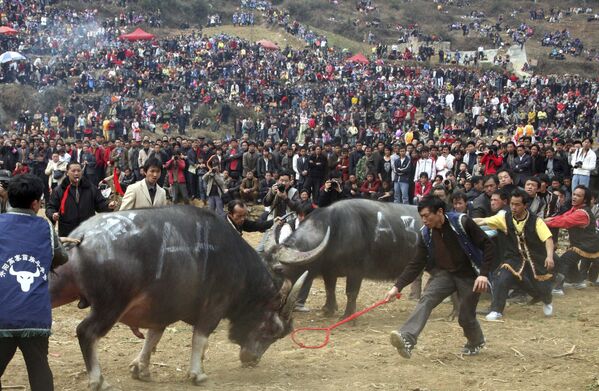
Above: In this photo released by China's Xinhua News Agency, people of the Miao ethnic group watch a bullfight in Kaiyang County, southwest China's Guizhou Province, 2 March 2008.
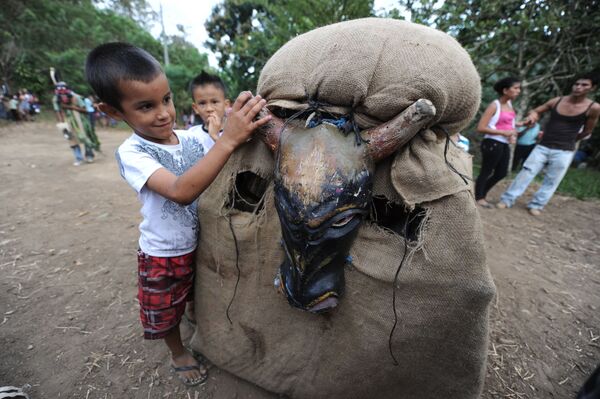
Above: A Costa Rican Boruca boy plays with a “bull” costume during the Feast of the Devils celebration in Rey Curre, 300 km south of San Jose, Costa Rica on 4 February 2012.
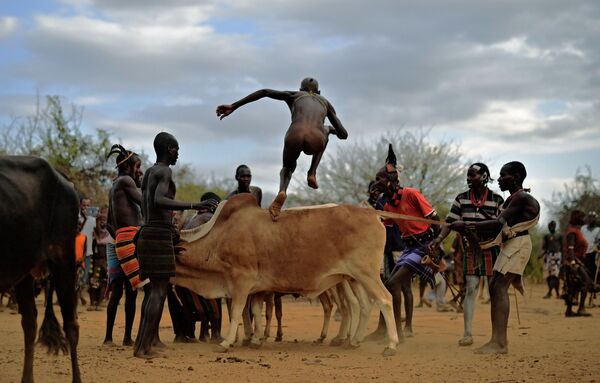
Above: A man from the Hamar tribe takes part in a bull jumping ceremony in Ethiopia's southern Omo Valley region near Turmi on 19 September 2016.

Above: Revellers try to escape bulls as the threat gets closer.
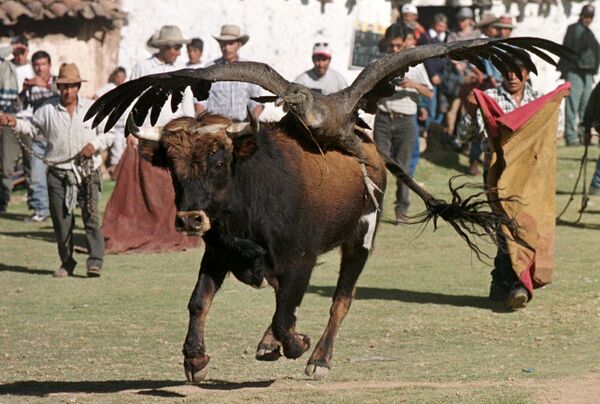
Above: An enraged bull with an Andean condor tied to its back lurches across the bullring in Cotabambas, on 29 July 1999, as an amateur bullfighter tries to get the bull's attention with a cape.
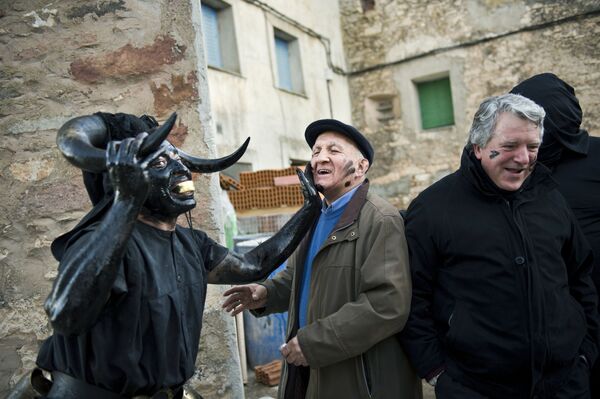
Above: A costumed man covered in oil and soot, carrying bull’s horns on his head and a cowbell on his belt representing the devil, touches the face of a villager while taking part in carnival celebrations in the small village of Luzon, Spain, 9 February 2013.

Above: Mason Lowe rides Cochise during a Professional Bull Riders event at the Sprint Centre in Kansas City, Mo. Lowe died Tuesday, 15 January 2019, after a bull stomped on his chest during a PBR chute-out competition at the National Western Stock Show in Denver.
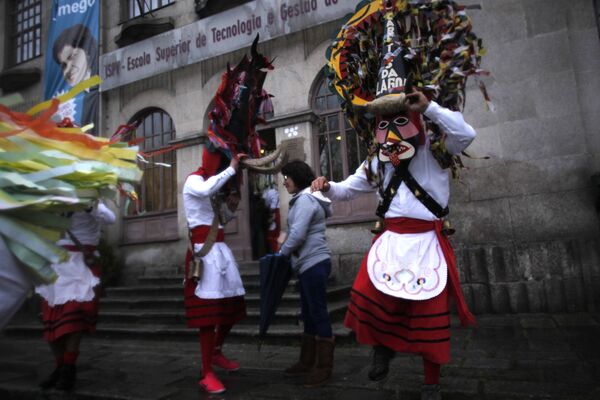
Above: Revellers from the Portuguese village of Lagoa, wearing bull masks and traditional carnival costumes, chase people to scare them during the carnival festivities in Lamego, northern Portugal, Saturday, 1 March 2014.
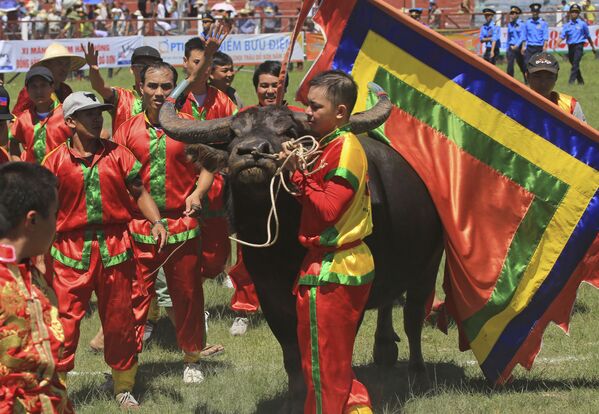
Above: A man leads his winning buffalo out of the fighting field in the Do Son beach town of Hai Phong, Vietnam, Thursday, 28 September 2017.

Above: Thai farmers controlling their buffaloes compete in a flooded field during the annual Wooden Plough Buffalo Race in Chonburi Province, southeast of Bangkok, Thailand, Saturday, 13 July 2019. The farmers are celebrating the start of the sowing season by racing the buffaloes, whose usual task is to plough fields.
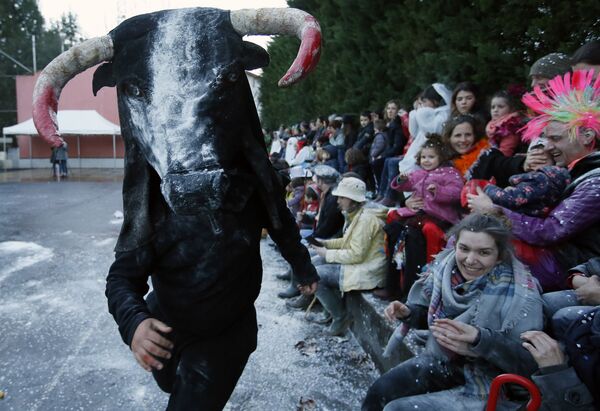
Above: A reveller dressed in a bull costume representing the mythology of the Basque country, takes part in the Carnival of Ustaritz, south-western France.

